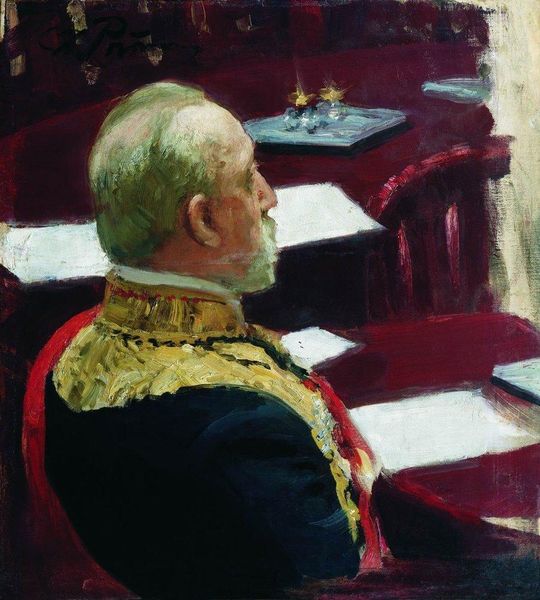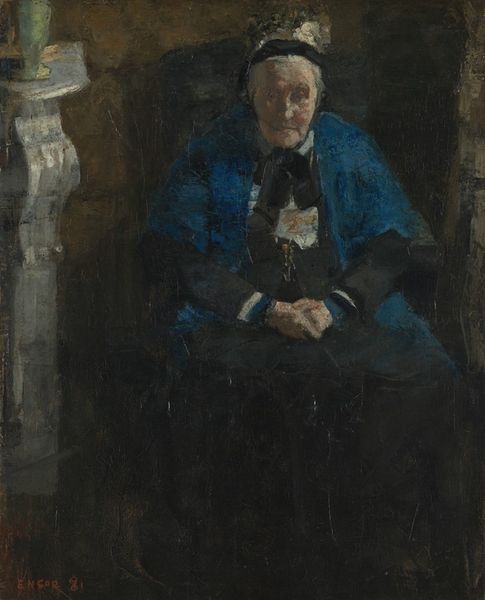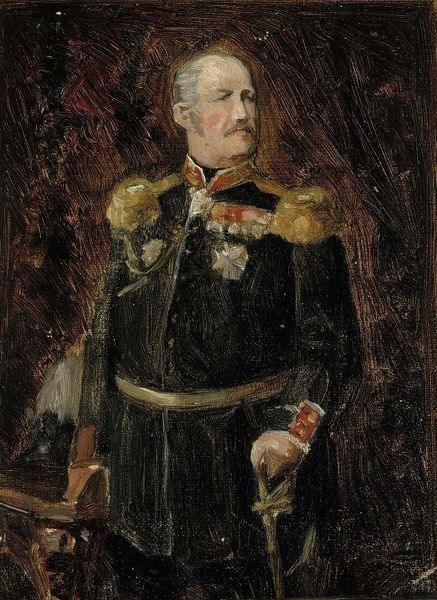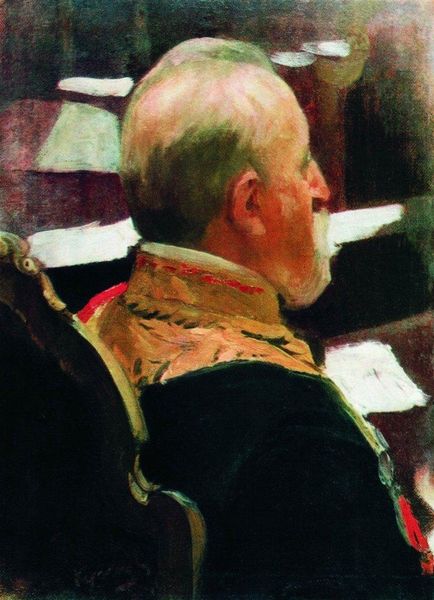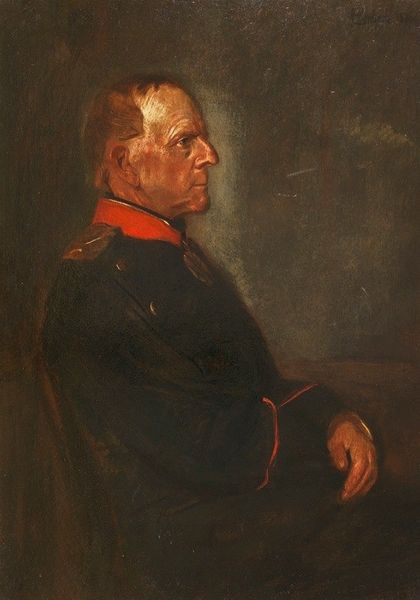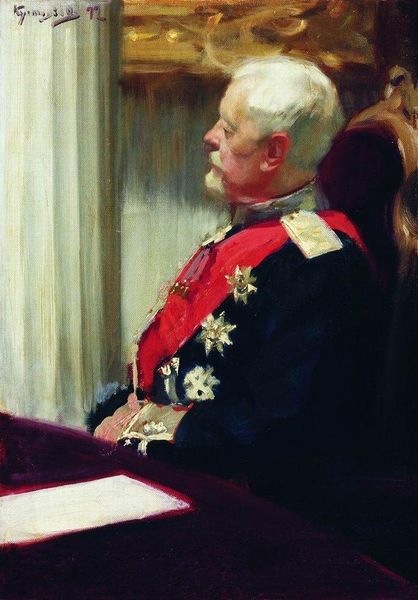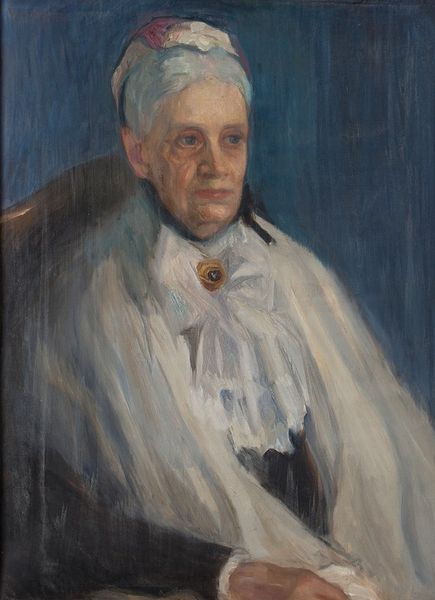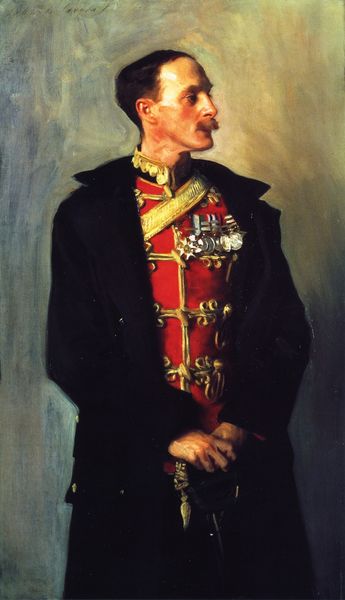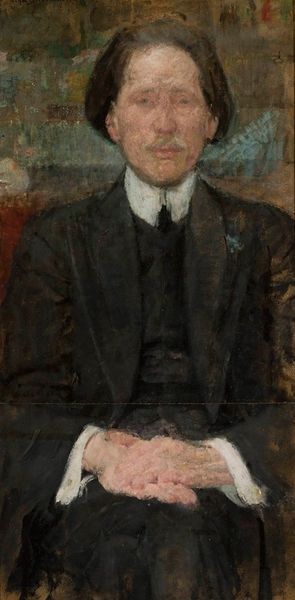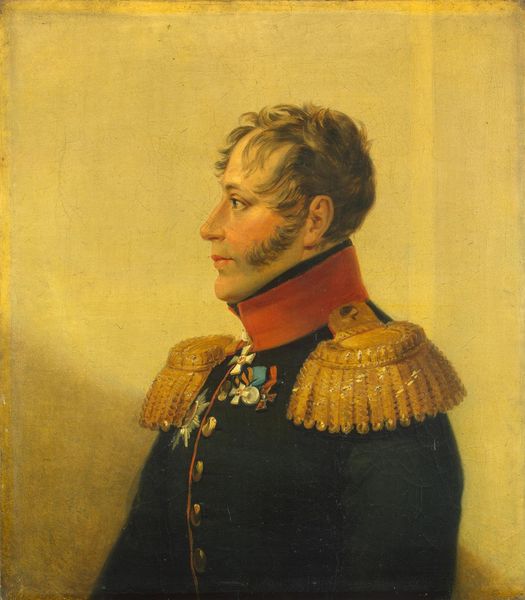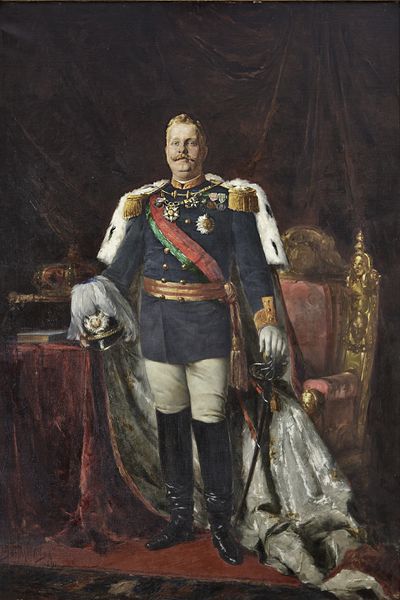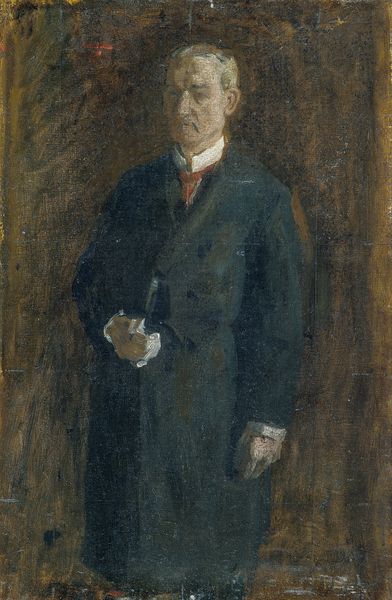
painting, oil-paint
#
portrait
#
painting
#
oil-paint
#
oil painting
#
russian-avant-garde
#
portrait art
#
realism
Dimensions: 69 x 53 cm
Copyright: Public domain
Curator: Editor: This is Ilya Repin's 1903 "Portrait of Konstantin Petrovich Pobedonostsev," rendered in oil paint. The colours are quite muted. It’s a stern portrayal, wouldn't you agree? What stands out to you? Curator: What immediately grabs my attention are the palpable brushstrokes and the very materiality of the paint itself. Repin’s process isn't hidden. He allows the tools and the means of production – the layering of oil, the impasto in the background – to become almost as important as the sitter himself. Look at the clothing – can you see how it almost renders him a part of an industrial system of labor and production? Editor: I see that! So, instead of focusing on Pobedonostsev's personality or political role, you’re drawn to how Repin made the painting and how that speaks to the materials and labour? Curator: Precisely. Consider the Russian Avant-Garde context. While formally a portrait, the work deviates from simply capturing likeness. The visible labour in its creation, the assertive brushwork - these elements challenge the traditional hierarchy, diminishing Pobedonostsev’s individual importance and elevating the act of creation, and even the materials themselves, into a subject. Doesn’t that question what we value? Editor: It does make you rethink the purpose of the portrait. If it's not just about who he was, but also how it was made and what that represents about labor, then the meaning changes entirely. Curator: Exactly. And in doing so, it democratizes the image, drawing attention to the art-making and perhaps, subtly questioning Pobedonostsev’s authority by showcasing the labor involved in even creating his image. Editor: That’s a perspective I hadn't considered. I was so focused on the subject, that I missed how Repin’s technique brings the materials and social context to the forefront. Thanks for the insight. Curator: My pleasure. Remember to look beyond the surface, and consider what the materials themselves are saying.
Comments
No comments
Be the first to comment and join the conversation on the ultimate creative platform.
